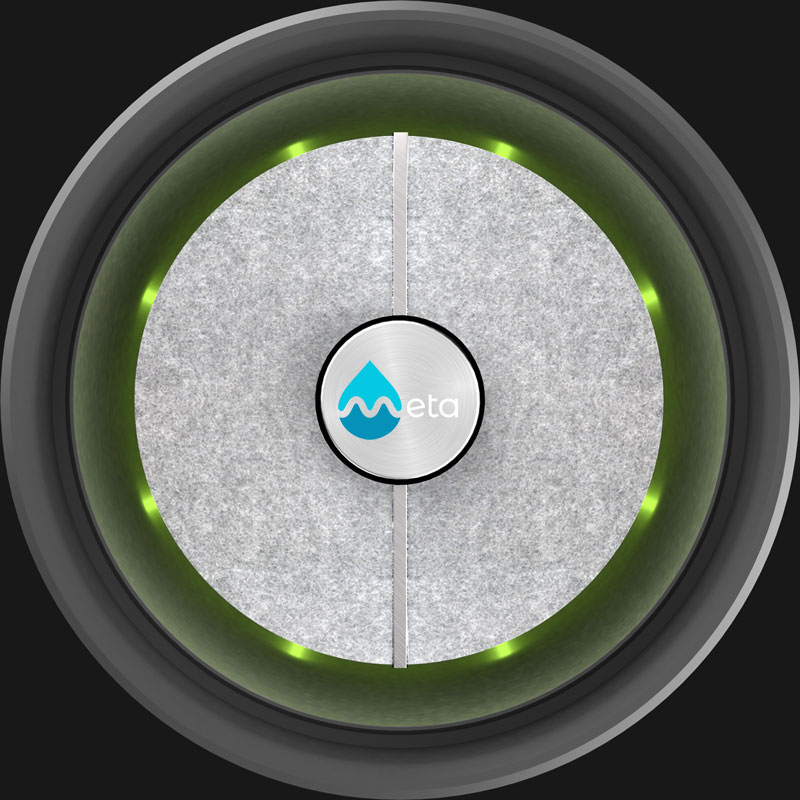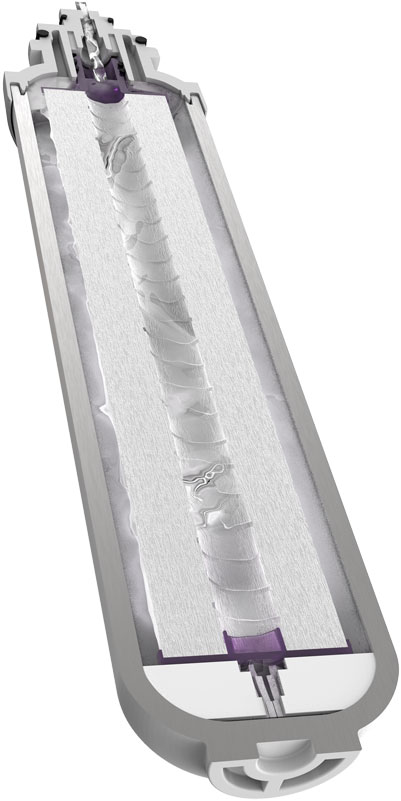REMOVE Phase
STANDARD IN ALL SYSTEMSStage 1: Suspended Solids
Removes/Reduces: Some Sediments, Particulates, Turbidity (ex. rust, sand, dirt, clay)
Stage 2: Large Organics
Removes/Reduces: Some Large Organic Matter (ex. cysts, hair, dust, blood)

How it works.

Mechanics
Water flows into the cartridge and down the rifled center of the woven microfiber media. As the water spirals downward and pressure builds, it is forced outwards through the fibers, subsequently leaving behind any large contaminants. Once it has passed all the way through the cartridge, it fills the outer chamber and then exits through the top.
Mechanical Reduction
Mechanical reduction is simply a sieving process. Water passes through a porous structure, and particles that exceed the size of the pores are left behind. The more depth (or thickness) a filter has, the longer its life span, allowing it to work effectively for a longer period of time. The REMOVE phase utilizes depth filters in order to mechanically remove large contaminants and to extend the life of filters further down the line.
Contaminant reduction data.
All of our systems include this initial REMOVE phase, and then go on to one of three membrane phases, ULTRA, NANO, or REBOOT, that all exceed this phase’s reduction capabilities (we simply include the REMOVE phase to extend the life of these delicate membrane filters). Click one of the membranes individually to see the cumulative mechanical reduction data, or click here to compare them.